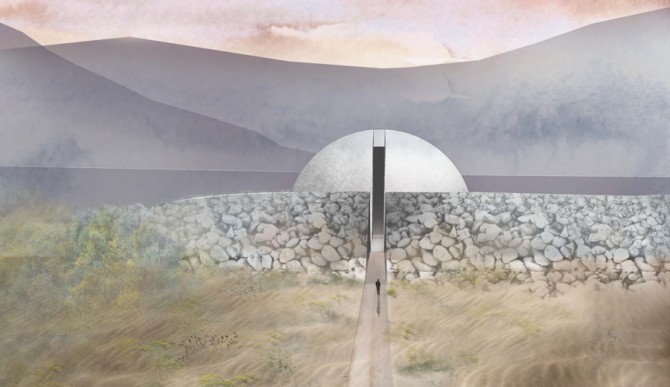
Photo: Courtesy of Kristen Franz
We all recognize San Onofre for it’s warm water and fun waves, but with the decommissioning of the nuclear power plant, what happens to the land now? With the closure of San Onofre Nuclear Generating Station (SONGS) in San Diego, there is a lot to consider. And rather that condemning this beautiful piece of coastline to the typical decommissioning process, we should instead reimagine the landscape for future generations.
Since Southern California Edison announced the station’s deactivation in June 2013, the United States Nuclear Regulatory Commission requires the operator to decommission the nuclear power plant following a strict set of requirements. These requirements include clearing the structures and systems from any radioactive material, as well as removing all radioactive fuel. Typically, the site is returned to a greenfield; the land is cleared, flattened, and fenced. It seems like with such a prime piece of real estate, like San Onofre, we could dream of something bigger: a place to play, reflect, and gather.

Photo: Courtesy of Kristen Franz
This project, what we’re calling “Calypso: Transforming a Landscape of Fear,” explores a new type of decommissioning. Using the current decommissioning timeline as a starting point, we test out different approaches and design solutions. It is a study of the current surrounding land use, stakeholders (people and organizations involved), as well as dissecting the nuclear power plant to understand its components yields an informed design. First and foremost, this project is thought of on a geologic timeframe. Indeed, the transformation from toxicity to harmony will be a long process.
What might this transformation look like?
Associations of fear could be calmed by harnessing patterns of erosion and deposition to induce long-term restoration. The exhausted landscape reaches into the sea to bring energy back in, creating a surreal space of observation, natural habitat, and long term regenerative legacy.
Through the breaking down of nonpermeable surfaces, a jetty could be constructed, reaching into the sea.
The jetty could protect Unit 3, as well as bring sand into the site, creating fields of dunes. The protected watersheds above and below the site could continually provide sediment to build up the dunes.
Unit 3, protected by the elements, could become a think tank, office space, and a performance center—and become the central hub of activities and culture.

Photo: Courtesy of Kristen Franz
Supplementary buildings could remain in tact and retrofitted for new use by environmental and technological non-profit organizations.
Unit 2 could surrender to the elements and be reopened in the cardinal directions—with wind and light pouring through its concrete casing. This will orient, providing a spectacular place to view solstices, and demonstrate the stark contrast of Calypso, between the concealer and the seductress.
In sum, facing the perceived fears associated with the San Onofre site will be central to its transformation. Spent fuel pools could become wading pools, containment structures could become concert halls, and a tarnished shoreline could become a radical point break. While this proposed transformation will be a long process, beginning to heal such scarred landscapes may be the first step in reimagining our future.

Photo: Courtesy of Kristen Franz
For more information on this initiative as well as Kristen Franz’s other initiatives, be sure to check out her site.

